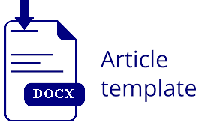Resiliensi Mata Pencaharian Peternak Ayam Broiler di Kota Ambon Selama Pandemi COVID-19
Income Resiliency of Broiler Farmers in Ambon Town during COVID-19
Abstract
The objective of the research was to investigate the resilience capability of broiler farmers who were affected by the COVID-19 pandemic. The research was arranged using a case study method. The research variables were respondent characteristics, farm characteristics, and respondent perception of impacts of COVID-19 on farm production, marketing, and income changes. The results showed that the COVID-19 pandemic affected farm inputs (feed and Doc) distribution, reduced the number of chickens sold, reduced the income gained by the farmers, and caused an increase in daily consumption costs. Strategies applied by the farmers to withstand included making better use of assets and endowments, namely human, natural, financial, social, and physical capital. It was concluded that the farmers under the contract scheme were more resilient than self-reliant farmers due to larger distribution and marketing channels possessed by enterprises that support the contract farmers.
Downloads
References
Akmal, (2006). Pemeriksaan Intern (Internal Audit). Jakarta: PT. Indeks, Kelompok Gramedia.
Armelia, V., Arkan, N.D., Ismoyowati, & Setianto, N.A. (2020). Dampak sosial ekonomi COVID-19 terhadap usaha peternakan broiler di Indonesia. Prosiding Seminar Teknologi dan Agribisnis Peternakan VII-Webinar: Prospek Peternakan di Era Normal Baru Pasca Pandemi COVID-19, Fakultas Peternakan Universitas Jenderal Soedirman. Purwokero. pp 161–167.
Budastra. (2020). Dampak Sosial Ekonomi COVID -19 dan Program Potensial untuk Penangananya; studi kasus di Kabupaten Lombok Barat, Indonesia.
Edwin, S. & Cepriadi. (2006). Analisa Pendapatan Peternakan Ayam Broiler Pola Kemitraan di kota Pekanbaru. J Peternakan. Fakultas Peternakan UIN SUSKA Riau, 3 (1) Februari 2006.
Iskandar, I. & Arfa’i. (2007). Analisis Program Pengembangan Usaha Sapi Potong di Kabupaten Lima Puluh Kota, Sumatra Barat (Studi kasus Program Bantuan Pinjaman Langsung Masyarakat). Fakultas Peternakan Universitas Andalas, Padang.
Mor, R.S., Srivastava, P.P., Richika, J., Varshney, S., & Goyal, V. (2020). Managing food supply chains post COVID-19: A perspective. International Journal of Supply and Operations Management, 7(3), 295-298.
Murwanto, A.G. (2008). Karakteristik peternak dan tingkat maskan teknologi peternakan sapi potong di Lembah Prafi Kabupaten Manokwari. Jurnal Ilmu Peternakan, 3(1), 8-15.
Soekartawi (1999). Agribisnis Teori dan Aplikasinya. Raja Grafindo Persada, Jakarta.
Tittonell, P., Fernandez, M., El Mujtar, V.E., Preiss, P.V., Sarapura, S., Laborda, L., Mendonça, M.A., Alvarez, V.E., Fernandes, G.B., Petersen, P., & Cardoso, I.M. (2021). Emerging responses to the COVID-19 crisis from family farming and the agroecology movement in Latin America – A Rediscovery of Food, Farmers and Collective Action. Journal Agricultural Systems, 190, 103098.
Wahyono, W. (2017). Orientasi pasar dan inovasi: Pengaruhnya terhadap kinerja pemasaran. Jurnal Sains Pemasaran Indonesia, 1(1), 23-40. https://doi.org/10.14710/jspi.v1i1.23-40
Copyright (c) 2023 The Author(s)

This work is licensed under a Creative Commons Attribution-ShareAlike 4.0 International License.
Authors who publish with this journal agree to the following terms:
- Authors retain copyright and grant the journal right of first publication with the work simultaneously licensed under a Creative Commons Attribution License that allows others to share the work with an acknowledgment of the work's authorship and initial publication in this journal.
- Authors are able to enter into separate, additional contractual arrangements for the non-exclusive distribution of the journal's published version of the work (e.g., post it to an institutional repository or publish it in a book), with an acknowledgment of its initial publication in this journal.
- Authors are permitted and encouraged to post their work online (e.g., in institutional repositories or on their website) prior to and during the submission process, as it can lead to productive exchanges, as well as earlier and greater citation of published work (See The Effect of Open Access).









